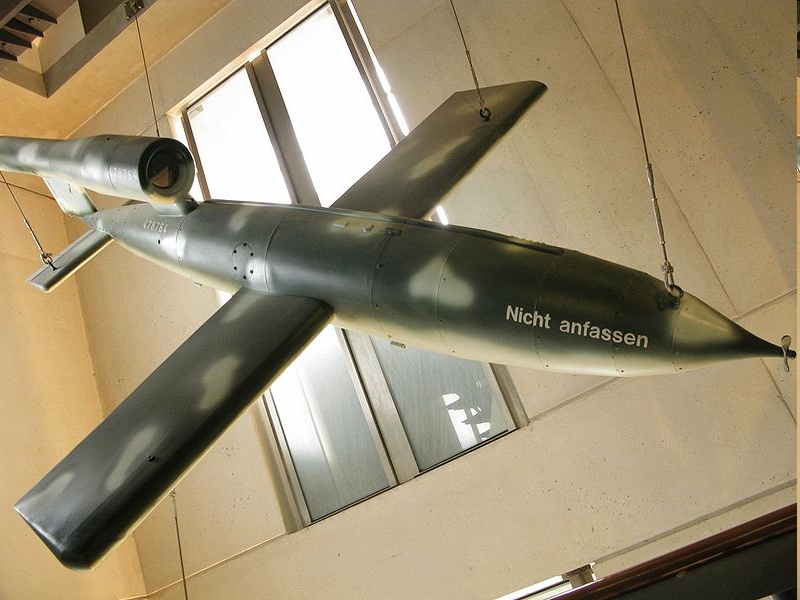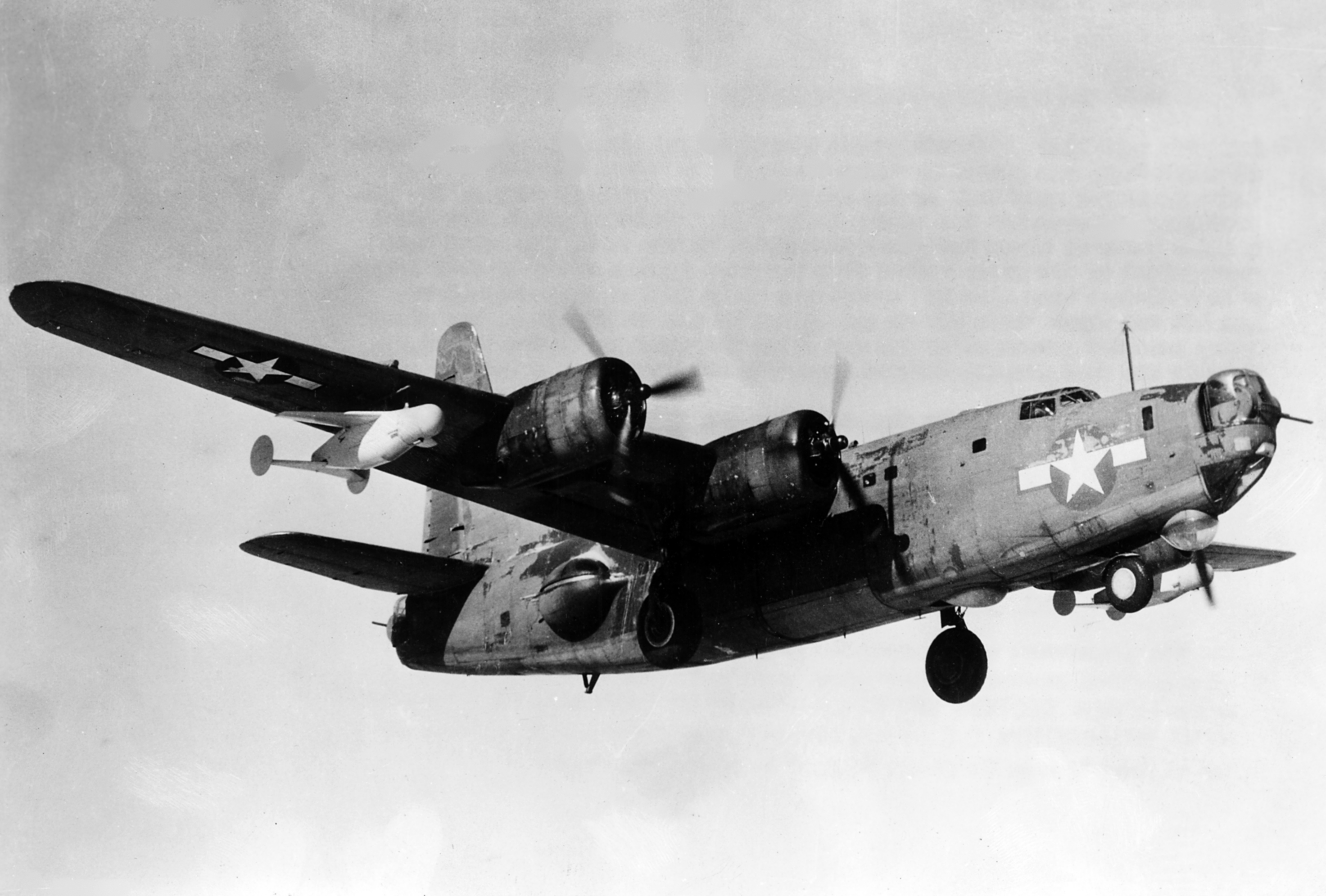V-1
During World War II, Nazi Germany's innovative V-1 demonstrated the formidable threat a UAV could pose in combat. America's attempts to eliminate the V-1 laid the groundwork for post-war UAV programs in the U.S.

At the outset of World War II, Fieseler Flugzeuhau designed the Fieseler Fi-103, better known as the Vergeltungswaffe (Revenge weapon)-1, or V-1, to launch via a long catapult-like ramp and fly at 470 mph. The V-1 UAV was powered by a thrust pulsejet, which produced a signature buzzing sound. It could carry a 2,000-pound warhead and was pre-programmed to fly 150 miles before it dropped its bomb. First launched against Britain in 1944, V-1s killed more than 900 civilians and injured more than 35,000 in British cities.
